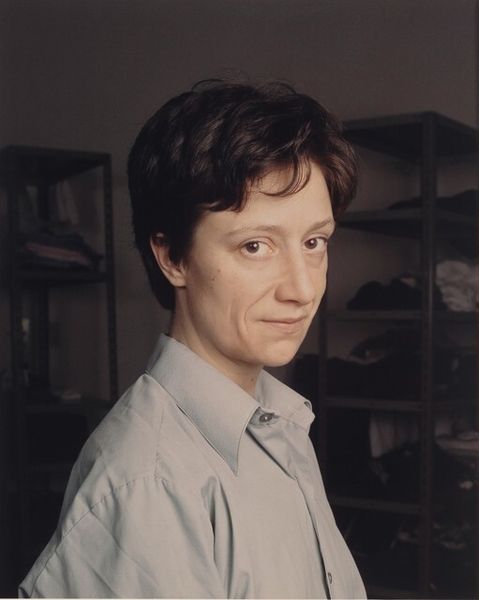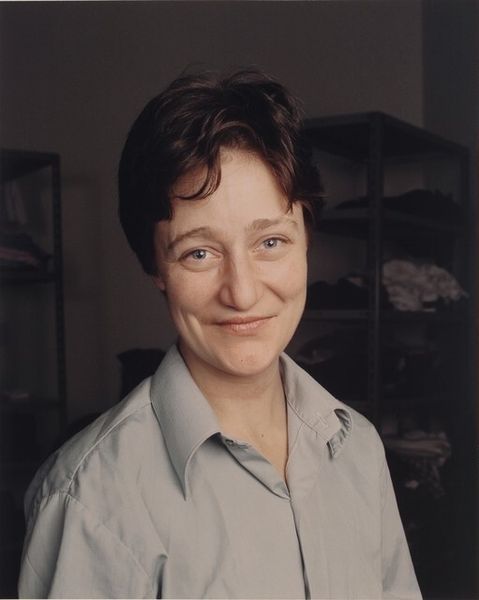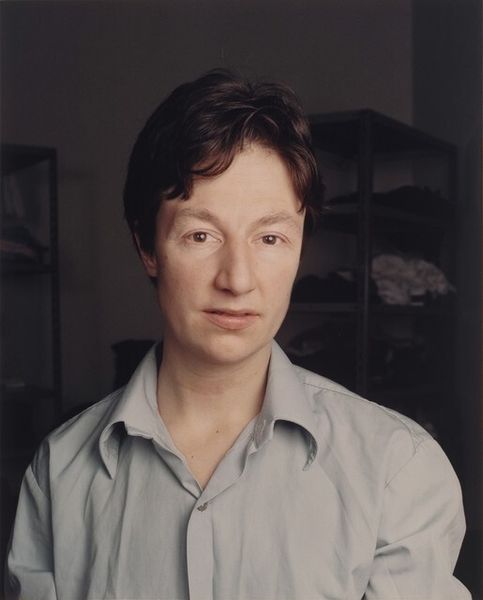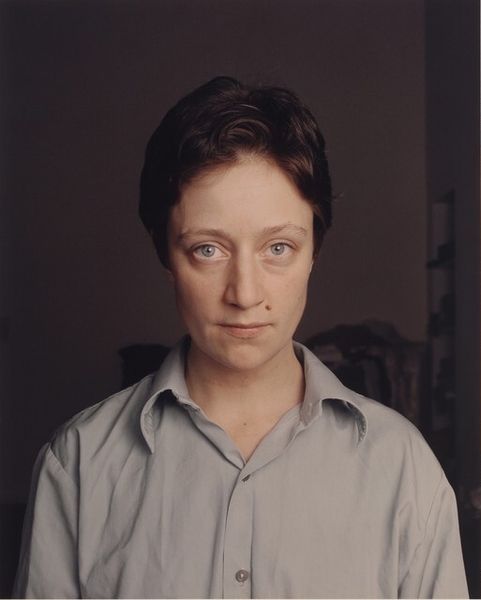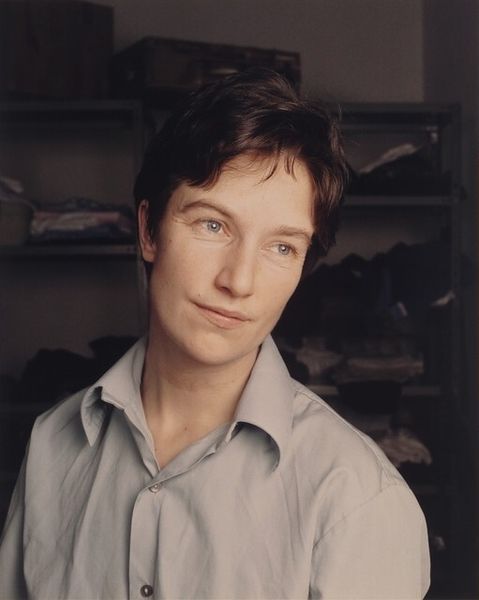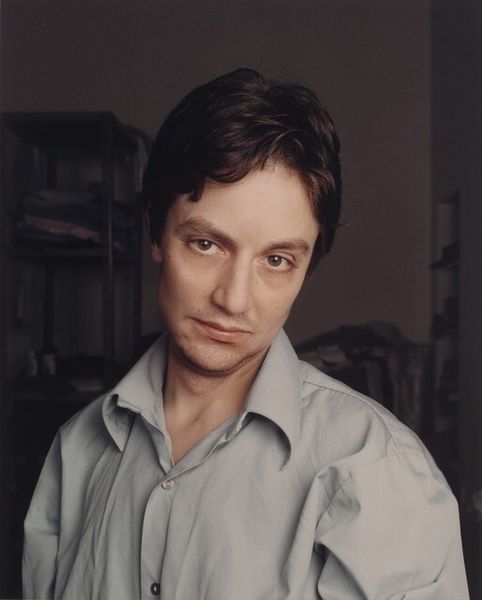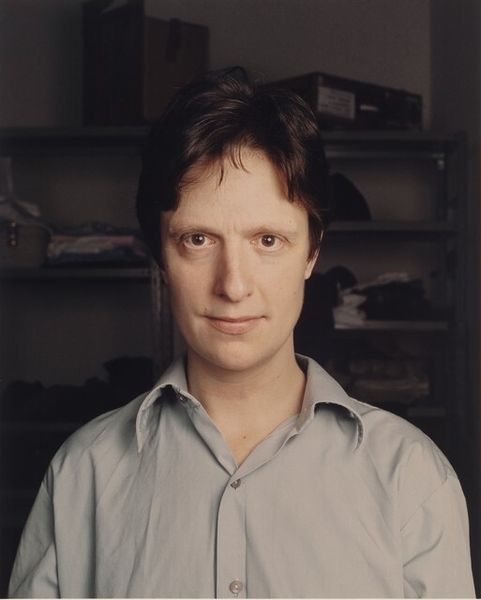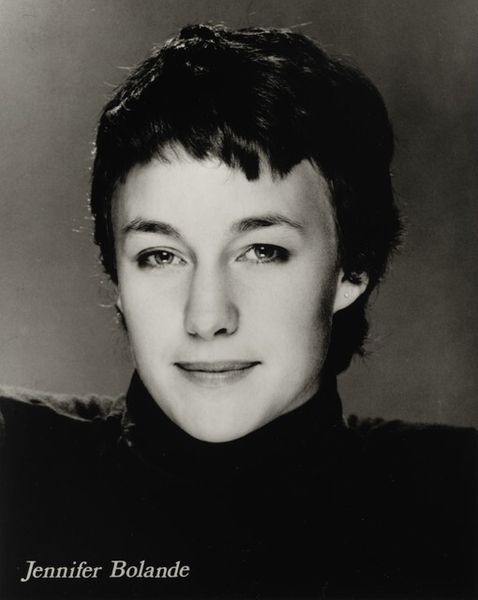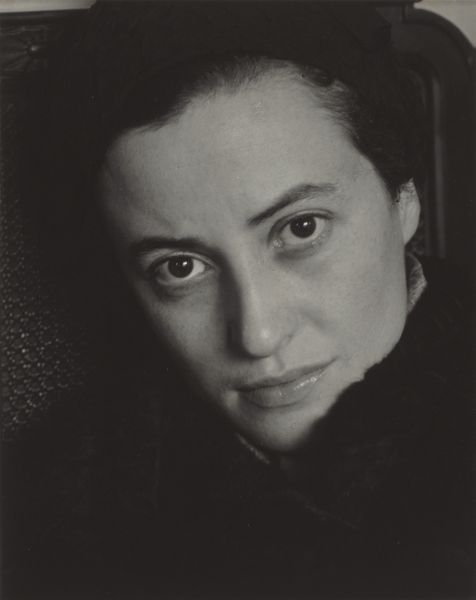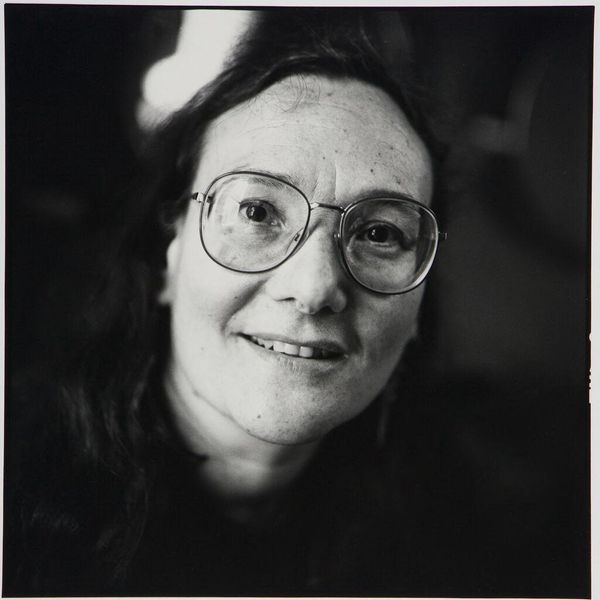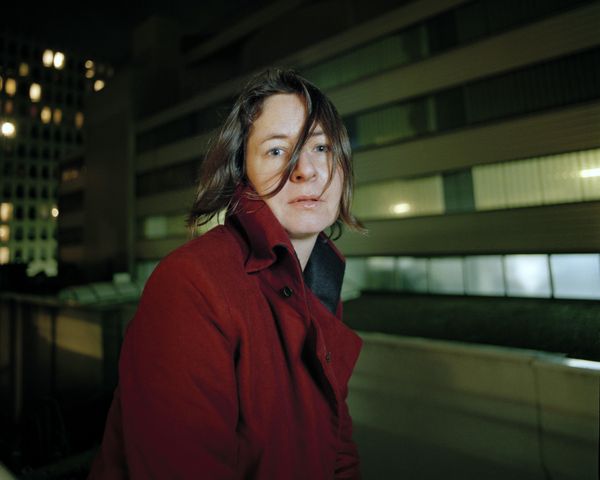
photography
#
portrait
#
contemporary
#
low key portrait
#
portrait image
#
portrait
#
portrait subject
#
photography
#
portrait reference
#
single portrait
#
portrait character photography
#
portrait photography
#
fine art portrait
#
celebrity portrait
Dimensions: image: 45.7 x 36.6 cm (18 x 14 7/16 in.) sheet: 46.4 x 37.3 cm (18 1/4 x 14 11/16 in.)
Copyright: National Gallery of Art: CC0 1.0
Editor: Here we have Vibeke Tandberg’s “Faces #8” from 1998, a photograph. The portrait’s muted tones and the mundane background—is that a storage shelf?—give it a somewhat unsettling feel, almost like a mugshot but softened. How do you interpret this work? Curator: It’s precisely that tension you identify that’s key. I see here an exploration of photographic process itself as a means of constructing and deconstructing identity. Note the artist's apparent access to, or creation of, what seems like an "authentic" image—but this alleged access is offset by what is, most certainly, a constructed self. We can appreciate the photographic "tools" being laid bare. Are we invited to accept that which is captured, without consideration for the mode in which it was processed? I wonder if the backdrop gestures towards the tools and locations which fostered the development of the final image. Editor: So you're saying the perceived realism might be deceptive? And the surroundings indicate part of a studio space or lab? Curator: Precisely. Think about the labor involved in photography at the time—the darkroom processes, the staging. Is Tandberg emphasizing the distance, or is she attempting to dissolve that separation to question what it truly entails? It suggests a self-awareness regarding the photographic medium, turning the very act of portraiture into a comment on fabrication. What expectations does portrait photography place on a sitter and photographer, if the ultimate aim is an agreed-upon “truth?” What do we *really* expect to find within the parameters of “portrait photography?” Editor: I see what you mean. By showing these behind-the-scenes hints, Tandberg makes us question what we’re seeing. Thanks for pointing out those aspects; I'm rethinking my initial read. Curator: And that's the point, isn’t it? To question the assumed naturalness, and to highlight the means of its production. A good photographic image is never just surface. It should invite inspection of all the labor that culminated within it.
Comments
No comments
Be the first to comment and join the conversation on the ultimate creative platform.
